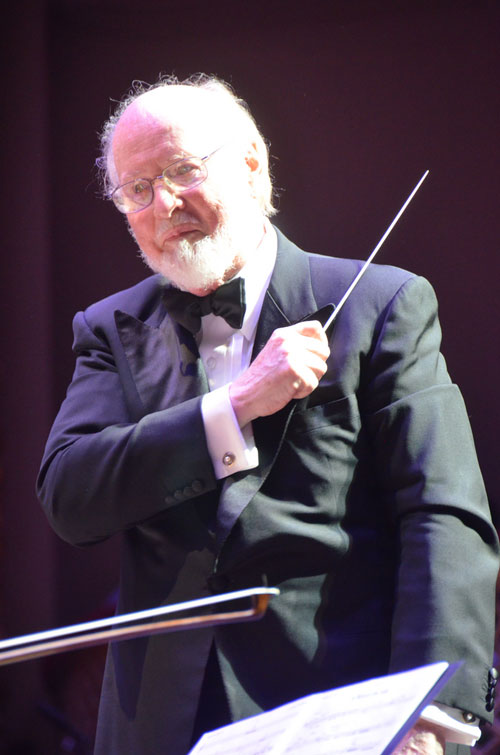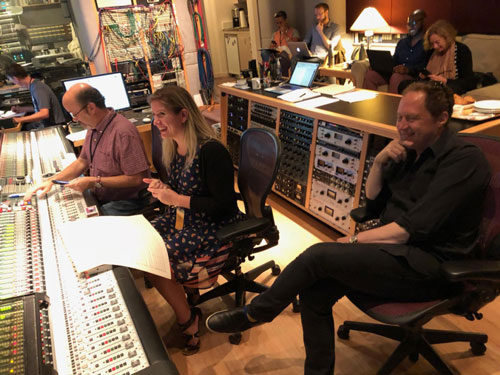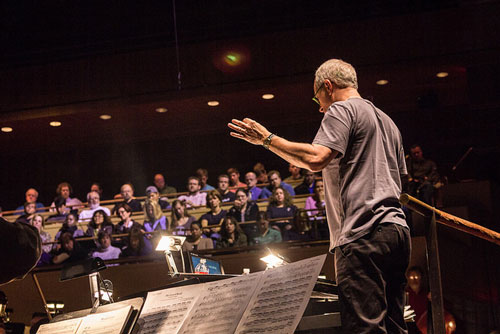Keep Your Composure
What’s it like to be a film composer, anyway? An expert on the subject pads our knowledge of film composition, what might be cinema’s most subtle art form.
Hey guys, Ernie here with a fresh piece from Andrew Egan, who last hit us with some chatter on sound design in film. This time, he talks about another aural element of the cinematic experience.
Sponsored By … You?
If you find weird or unusual topics like this super-fascinating, the best way to tell us is to give us a nod on Ko-Fi. It helps ensure that we can keep this machine moving, support outside writers, and bring on the tools to support our writing. (Also it’s heartening when someone chips in.)
We accept advertising, too! Check out this page to learn more.
1908
The year that the first piece of music was written specifically for a movie. The film, L’Assassinat du Duc de Guise (The Assassination of the Duke of Guise), was silent and theaters at the time didn’t have sound systems. Theaters would employ in house pianists to perform live with each showing of the film. The score was written by Camille de Saint-Saëns, a classical composer. For the next 50 years, classical composers would dominate film, radio, and television productions.

Famed film composer John Williams, who we can’t really have this conversation without mentioning. (Chris Devers/Flickr)
Being a film composer is difficult work
As the vice president of film, TV & visual media relations for BMI (Broadcast Music Incorporated, an artists’ rights non profit that collects royalties for commercial use of members’ work), Doreen Ringer Ross has a unique insight into what makes a great film composer.
“You have to have incredible musical chops,” Ringer Ross said. And that only describes the base requirements for the job. She offers a laundry list of character traits that make for great film composers, including (but not limited to) sense of humor, congenial personality, and a willingness to create art in service of another’s artistic vision.
It’s an interesting job in that it’s based on the relationship between a composer and a director. “It’s like a marriage,” Ringer Ross said. “When you find yourself in a groove with someone, it can be a lifelong relationship.”
Case in point, John Williams. Of the 32 movies directed by Steven Spielberg since first collaborating with Williams on The Sugarland Express in 1974, 29 of those have been scored by Williams.
It’s difficult to be a film composer. It’s difficult to find work as a film composer. And when you find a filmmaker you groove with, it’s like finding the love of your life.
Part of me wanted to think that the skill level required of film composers meant it was more of a meritocracy than other parts of the entertainment industry. Doreen quickly shot down that notion.
“No,” she said. “I speak with composers that wonder why someone got the job they wanted. The one they were perfect for.”

Film composers—including industry veteran Mark Isham, right—take part in the Sundance Institute Film Music and Sound Design Lab at California’s Skywalker Sound. (via the BMI website)
Paths are opening. Sundance Labs, which Doreen Ringer Ross helps organize, gathers directors, composers, and sound designers to help them collaborate. However, it’s not an easy program to enter. Some 800 composers apply every year for eight slots, for a one percent admission rate. For comparison, Harvard admitted 5.2 percent of its undergraduate applicants in 2017.
three
The number of films Spielberg has made without John Williams since he started working with the composer. For curiosity’s sake, they’re Ready Player One, The Color Purple, and Bridge of Spies. It’d be weird not to mention them.

James Newton Howard, an eight-time Academy Award nominee who has worked on dozens of film scores over the years, including The Dark Knight (with Hans Zimmer) and all four of the The Hunger Games films. (Mason Pelt/Flickr)
Film composition is a unique perspective to analyze the development of movies over time
At times, the relationship between directors, sound designers, and composers was isolated at best, and adversarial at its worst. A moment on screen can only include so much.
When sound became an option in film, dialogue, effects, and music started competing for the same space. In many productions, they don’t quite fit together. Some directors or producers make it work. To say that Star Wars changed Hollywood is a well worn track. It really did though.
The 1970s welcomed an era of thoughtful directors that considered every part of a film. Ben Burtt and John Williams were as much a part of Star Wars as George Lucas. The studio system didn’t start catching up until much later.
The 1996 natural disaster film Twister is a perfect example. In the film’s climactic sequence, Helen Hunt and Bill Paxton find themselves in a shed, strapped to pipes leading underground. Through the banging of debris and thunderous wind, you can hear a score in the background. It’s faint, even with the best of sound systems. Ringer Ross called it one of the most beautiful scores she’d heard for a scene, only to cry when it was drowned out by the sound design.
In movies, “there’s no shortage of blame,” Ringer Ross explains. The director or a producer may have made a style choice. Maybe the scene didn’t test well with audiences. There’s no telling why a specific movie gets made the way it does, let alone how specific scenes find their final form.
On occasion, movies take the time to balance sound effects with the film’s score. Ringer Ross pointed to The Matrix as a film that used sound and music to create something more satisfying. The Raining Code visual was paired with twinkling sound effect that often precedes the movie’s bombastic score.
When it comes to film scores, the best smack you in the face. And again, we return to John Williams.
Before Star Wars, music and sound were largely separated in film. You had moments when a brilliant composer and director worked together to balance both. Bernard Herrmann’s work on Psycho is a great example. In the shower scene, in the middle of visceral violence, the score helps define the madness motivating the scene while overshadowing the almost gentile sound of fatal stabbing.
As movies became more sophisticated, sound designers, film composers, and directors worked together to find mainstream success and push new boundaries.
An actor speaks, foley artists and sound designers add minutiae. With a crescendo, a score identifies a hero. And then a villain with dissonant notes.
All the pieces of a movie come together and when it’s good, no one knows why but everyone wants to take credit. In the aftermath, all we need to do is look at the details and how they worked together to create something we almost didn’t notice.
:format(jpeg)/2018/09/tedium090618.gif)
/2018/09/tedium090618.gif)


/uploads/andrew_egan.jpg)